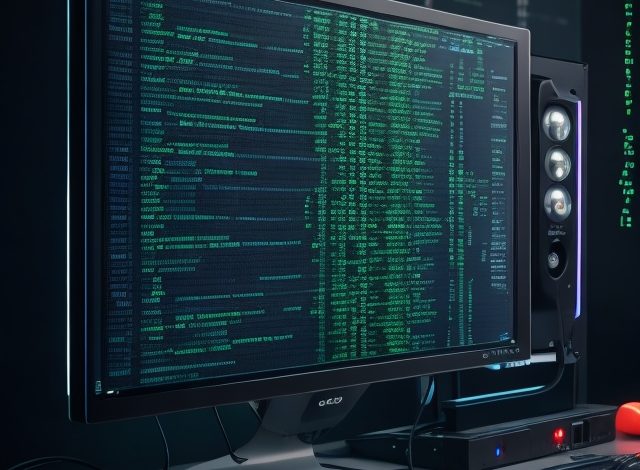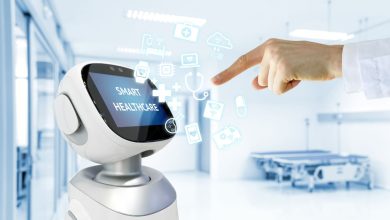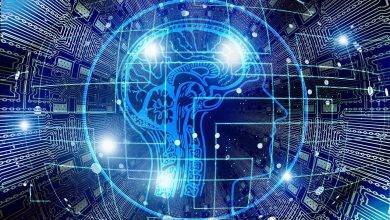What is technology in computer programming

In this blog article, we’ll set out on a trip to comprehend the essence of technology in computer programming.
As we study, programming technology will develop. We shall trace the primary programming productivity turning moments from low-level to high-level languages. Version control systems and integrated development environments (IDEs) have revolutionized programmers’ workflows.
Defining Technology in Computer Programming
Computer programming technology refers to tools, software, and hardware that help design, build, and manage software programs. Programmers employ several components to write, test, debug, and deploy code.
Computer programming lets people turn logical instructions into executable programs for computers and other devices. It enables programmers to maximize computer processing power to meet consumer needs and solve complex problems.
Computer programming technology may be categorized as follows:
Programming languages let computers understand algorithms and commands. They give syntax and standards for software development. Examples include Python, JavaScript, C++, and Java.
Integrated Development Environments (IDEs) are powerful software packages that speed development. Code editors, debuggers, compilers, and build automation tools are commonly included. Visual Studio, Eclipse, and the JetBrains toolkit offer a single environment for writing, testing, and delivering code, making programmers more productive.
Frameworks and Libraries: Frameworks and libraries speed development by providing reusable pieces and abstractions. Instead of reinventing the wheel, programmers may focus on application logic with their fixed structures and functionalities. React, Angular, Django, and TensorFlow.
VCS helps programmers manage source code repositories, track changes, and communicate. Branching, merging, and conflict resolution help developers collaborate on a project. Git, Mercurial, and Subversion dominate version control.
Technology offers several tools for testing and debugging code to verify its reliability. Programmers use debuggers, code analyzers, and unit testing frameworks to detect and repair app bugs. JUnit, PyTest, and Visual Studio Debugger.
Infrastructure and Deployment Tools: Technology simplifies software management and deployment in many scenarios. Containerization platforms (Docker, Kubernetes), cloud computing services (Amazon Web Services, Microsoft Azure), and server configuration management tools (Ansible, Puppet) make application deployment and maintenance scalable, flexible, and effective.
The Evolution of Technology in Computer Programming
Programming technology has had a remarkable history characterized by game-changing discoveries and paradigm changes. The progress of technology has fundamentally changed how we create software, from the early days of programming languages to the modern era with complex tools and frameworks. Let’s examine the significant turning points that have influenced the development of programming technology:
Machine language and low-level languages:
In the early days of computing, programmers typed instructions directly in machine code, made up of binary numbers that computers could interpret. Assembly languages appeared as computers grew more powerful, offering a more legible representation of machine code. Fine-grained control over hardware resources was possible because of these low-level languages.
Advanced Languages -(Technology in Computer Programming):
High-level languages like Fortran, COBOL, and Lisp were introduced, representing a considerable programming technology advancement. Because these languages enable programmers to describe sophisticated reasoning using human-friendly syntax, productivity has grown, and greater abstraction has been added. Higher levels of modularity and code reuse were made possible by high-level languages.
Development environments that are integrated:
The introduction of IDEs altered the programming environment. IDEs like Turbo Pascal, Borland C++, and Microsoft Visual Studio brought code editors, compilers, debuggers, and other tools into a single integrated environment. IDEs introduced capabilities like auto-completion, code refactoring, and project management while streamlining the development process and increasing productivity.
OOP: Object-Oriented Programming
In the 1980s, OOP became a potent paradigm for programming thanks to tools like C++ and Smalltalk. Classes, objects, and inheritance were introduced by OOP, enabling modular and reusable programming. This paradigm encouraged encapsulation, polymorphism, and code structure, tremendously aiding software development.
Internet technologies
A whole new generation of programming technologies emerged with the development of the Internet. JavaScript, CSS, and HTML have developed into the core languages for creating dynamic web pages and client-side interaction. Developing online applications with server-side processing and data manipulation was made possible by server-side technologies like PHP, Java Servlets, and ASP.NET.
Libraries and Frameworks:
The growth of frameworks and libraries accelerated programming technology even more. The availability of ready-to-use structures, libraries, and standards in frameworks like Ruby on Rails, Django, and ASP.NET MVC sped up web application development. Client-side interaction and user interface creation were made more straightforward by libraries like jQuery, React, and Angular.
Virtualization with cloud computing:
The way software applications are distributed and maintained has been entirely transformed by developments in virtualization and cloud computing technologies. Platforms like Amazon Web Services (AWS), Microsoft Azure, and Google Cloud Platform made it possible to build scalable and adaptable infrastructure, freeing developers from worrying about setting up and maintaining hardware.
Continuous Integration/Deployment (CI/CD) and DevOps
Automation and teamwork have moved to the front of programming technology with the advent of DevOps processes and tools. Tools for continuous integration and deployment, such as Jenkins, GitLab CI/CD, and Travis CI, sped up the software delivery process and made it simpler for the development and operations teams to work together.
AI (artificial intelligence) and machine learning
Machine learning and AI technologies have made considerable strides in recent years. TensorFlow, PyTorch, and sci-kit-learn are just a few libraries and frameworks that have made it simpler for programmers to create intelligent applications. Technologies like computer vision, deep learning, and natural language processing have made it possible to innovate and automate in new ways.
Development with Little or No Coding:
The introduction of low-code/no-code development platforms represents a more recent breakthrough in programming technology. These platforms enable citizen developers to engage in software development and hasten the delivery of apps by allowing individuals to design applications using visual interfaces and little to no code.
The Role of Technology in Computer Programming
Technology boosts efficiency, optimizes processes, and creates inventive apps in modern programming. Technology’s primary responsibilities in programming:
Efficiency and Productivity:
Technology speeds up coding. Code completion, syntax highlighting, and debugging help developers write, test, and debug code in IDEs. These technologies reduce repetitive tasks, automate processes, and provide real-time feedback, allowing programmers to focus on complex problems and high-quality software.
Fast Growth:
Technology has accelerated software development and deployment. Frameworks, libraries, and SDKs let developers reuse components and abstractions and save time. DevOps and cloud platforms streamline integration, testing, and deployment, accelerating release cycles.
Work Together:
Technology facilitates developer collaboration. Git manages code modifications, conflicts, and code integrity for several developers on the same codebase. Collaboration platforms, project management tools, and communication technology let remote teams collaborate.
Scalability and Flexibility:
Modern programming tools grow with business needs. Cloud platforms let developers build applications quickly and handle high traffic. Docker simplifies platform and infrastructure deployment of portable, scalable application environments.
Test automation:
Automation tests software. Test automation frameworks, unit testing tools, and CI/CD pipelines automate testing, ensuring software quality, reducing labor, and accelerating feedback loops. Automated deployment and monitoring solutions speed up application deployment and performance improvement.
New Tech:
Technological improvements provide new solutions and explore new tech. Machine learning, AI, data analytics, and IoT provide new software development approaches. These libraries, frameworks, and platforms let developers build intelligent, data-driven apps.
UX and accessibility:
Technology simplifies the software. UI frameworks, design systems, and responsive web technologies make applications beautiful, responsive, and cross-platform.
The Future of Technology in Computer Programming
Computer programming technology’s future is bright. Programmers, tools, and solutions will change as technology advances rapidly. Key tech trends in computer programming include:
AI and ML:
AI and ML will change programming. AI-powered tools and frameworks will automate code creation, bug discovery, and optimization. ML techniques let intelligent systems evaluate code patterns, propose changes, and rework code. AI and ML will boost programmer productivity.
Automated Low-Code Development:
Low-code and no-code development platforms will let non-programmers build software. These platforms will ease development with visual interfaces, pre-built components, and drag-and-drop. Code creation, testing, deployment, and monitoring will be automated.
Quantum Computing
Programming may alter due to quantum computing. To use the enormous processing power of quantum computers, quantum algorithms, and languages are being created. To address complicated issues that conventional computers cannot handle, programmers must learn new paradigms and languages. Computing-intensive jobs will need quantum programming.
The IoT:
The IoT will link billions of devices and generate tons of data. Programmers will create IoT-based apps and services. They will integrate devices, design efficient communication protocols, and develop apps that use IoT data for real-time insights and automation.
Cybersecurity:
Cybersecurity needs to grow with technology. Programmers will create safe software and execute cybersecurity best practices. Secure coding, vulnerability detection, and encryption methods will combat increasing cyber threats. Developers must keep current on security technology and industry requirements.
AR and VR:
AR and VR are growing across sectors. Programmers will lead immersive app development. They will create dynamic virtual worlds, integrate real-world data with virtual overlays, and produce seamless AR/VR apps. These technologies will affect gaming, education, healthcare, and architecture.
Adapting and Learning:
Programmers must be perpetual learners and adaptable due to the quick rate of technological progress. They must keep up with new programming languages, frameworks, and tools.



